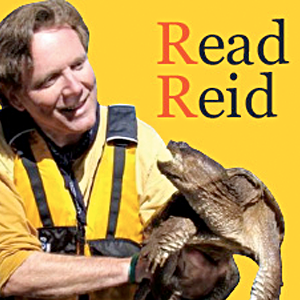
Dedicate yourself to making a difference in nature
“You cannot get through a single day without having an impact on the world around you. What you do makes a difference, and you have to decide what kind of difference you want to make.”
Jane Goodall
Jane Goodhall has been one of my heroes since the 1960s when National Geographic presented her research work with chimpanzees at the Gombe Stream Game Reserve in Tanzania. I was reminded of her again in 2017 when the October issue included a retrospective on her life and work.
Her message about our impact on the world and the difference we can make got me thinking about our region, the year ahead and how we can make a difference in the natural world.
I am not one for New Year’s resolutions, but I like to start the year with lists of activities and adventures I hope to accomplish in the months ahead. With that in mind, allow me to suggest a 2019 list of activities for you to consider. They just might help you find a rewarding and fun way to make a difference in our world — right here in The Last Green Valley National Heritage Corridor. Today I’ll start with the winter season, and next week’s column will share ideas for spring, followed by summer and autumn.
Winter is when the first harbinger of spring arrives, delivered by the U.S. Post Office in the form of seed catalogs. Dreams of warm earth, and green spouts has me planning my vegetable garden and warm season outdoor activities. Those seed catalogs offer us an opportunity to consider planting a pollinator garden. Pollinators are critical to the ecosystem.
If keeping our region green and protecting wildlife are important to you, then you’re in luck. Land trusts are critically important to our region and hold thousands of acres in the region that are preserved from development in perpetuity. They are volunteer-led, nonprofit organizations that depend on volunteers (perhaps someone like you) to join and assist with outdoor activities maintaining the properties. These land trust sites provide outdoor programs and recreational opportunities while also conserving pristine, and in some locations rare, native woodlands, grasslands, and aquatic habitats.
If you are not already familiar with a land trust in your area you can always search online with the words “land trust” and the name of your town or check out the Connecticut Land Conservation Council website with a list of land trusts in the state at ctconservation.org/findalandtrust.
Along with land trusts, other organizations such as the Audubon Society have exceptional preserve locations, a calendar of numerous outdoor programs on birds and wildlife, as well opportunities to volunteer in citizen science research and land stewardship work with trained naturalists and ornithologists.
We are fortunate to have two Audubons in the state with the same overall mission of preservation and programs. You can find them at: ctaudubon.org and ct.audubon.org
One of my go-to locations to get outdoors or attend an informative program on the natural world is Goodwin Forest and Conservation Center. Located in Hampton, Goodwin is managed by a partnership between the Connecticut Department of Energy and Environmental Protection and the Connecticut Forest and Park Association. CFPA educators and naturalists provide programs on thousands of acres of Goodwin State Forest, which is managed by DEEP foresters. There is a very active group, the Friends of Goodwin, with a membership program offered by CFPA, trails and grounds maintenance and a regular schedule of outdoor programs. Check them out at friendsofgoodwinforest.org.
This winter I hope you discover an organization and location where you can make a difference in preserving and protecting the natural resources that make our region a wonderful place to live and work. I guarantee you’ll get outdoors, you’ll meet some interesting people and you’ll learn something new.
This winter if you’re looking for an easy way to make a difference from the comfort of your home then put out a bird feeder. Spring nesting season is when we tend to notice birds, but it is the frozen season when natural food sources are scarce and native birds need us most. Winter is bird feeder season. Don’t forget to keep the seed and suet stocked until the warm weather returns.
In next week’s column I’ll share the many springtime opportunities where you can make a difference in nature. We’ll examine the many community events and activities, including Earth Day, town-wide cleanups, water quality monitoring and TLGV’s Spring Outdoors with three months of walks and experiences.
The Last Green Valley National Heritage Corridor is still 77 percent undeveloped land of fields and forests. I hope you’ll join me and others as we roll up our sleeves, volunteer, and get to work caring for, enjoying, and passing on this beautiful place we call home.
Bill Reid is chief ranger of The Last Green Valley National Heritage Corridor and has lived in the region for more than 35 years. He can be reached at bill@tlgv.org.
Get Connected
Sign up for our newsletter
"*" indicates required fields



